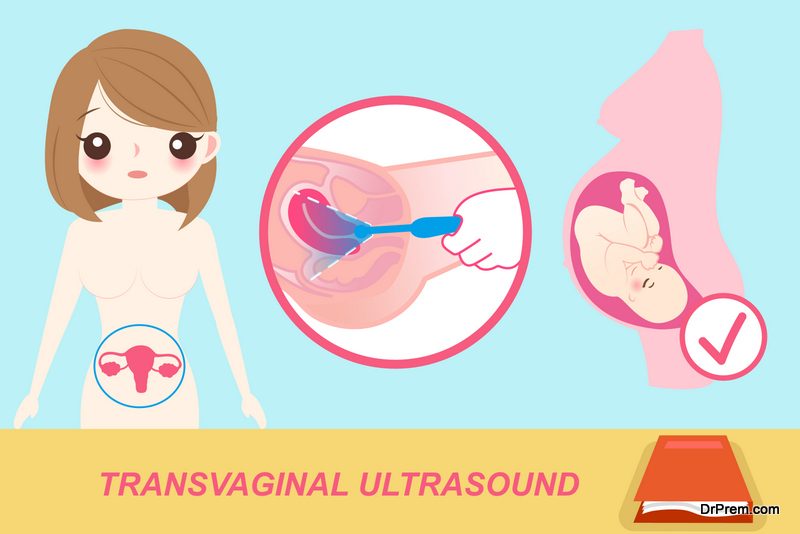If you’ve ever wondered what your body looks like on the inside, getting an ultrasound is the best way to find out. While these procedures are only performed when deemed necessary, they are a fascinating way for doctors and other healthcare professionals to get a better look at what’s happening inside your body. Ultrasounds use sound waves to take pictures of specific areas of the body. Ultrasounds are a type of diagnostic test used to determine the cause and location of a patient’s issue or discomfort. Only trained professionals can perform ultrasounds. These professionals are known as ultrasound technicians or diagnostic medical sonographers. You can read more about this career opportunity on this website. This article will detail 3 types of ultrasounds, why you might need them, and how to prepare.
1. Obstetric
 This is probably the type of ultrasound that first comes to mind when you hear the word. Obstetric ultrasounds are used to examine pregnant women, including the baby, fetus, and embryo. A trained ultrasound technician will examine a pregnant woman for a variety of reasons. The initial ultrasound is performed to determine that the patient is in fact pregnant. The tech will look for a live fetus in the mother’s womb. At the same time, they will determine the age and position of the fetus. Women will undergo several ultrasounds throughout their pregnancy to monitor the health and growth of the baby. Some expecting parents choose to find out the gender of the child, which is also seen during an ultrasound. Doctors can identify if there are any abnormalities in the baby or if there are multiple births.
This is probably the type of ultrasound that first comes to mind when you hear the word. Obstetric ultrasounds are used to examine pregnant women, including the baby, fetus, and embryo. A trained ultrasound technician will examine a pregnant woman for a variety of reasons. The initial ultrasound is performed to determine that the patient is in fact pregnant. The tech will look for a live fetus in the mother’s womb. At the same time, they will determine the age and position of the fetus. Women will undergo several ultrasounds throughout their pregnancy to monitor the health and growth of the baby. Some expecting parents choose to find out the gender of the child, which is also seen during an ultrasound. Doctors can identify if there are any abnormalities in the baby or if there are multiple births.
What to Expect:
If you’ve never been pregnant, you may not know what to expect at your first ultrasound. Ultrasounds are sometimes performed in the OBGYN (obstetrics and gynecology) office or an imaging facility. Here, the doctor will have you lay on your back and expose your stomach. The tech will then use a transducer to examine your abdomen. This is done using warm gel that helps transmit sound waves. These high-frequency sound waves detect echos and bounce off structures in the body. The tech will get a clear picture of your uterus, ovaries, and fetus. You can see your baby on the monitor and most offices print out photographs for you to take home. The doctor will measure the baby and check its position. The exam takes anywhere from 20 to 30 minutes from start to finish and is virtually painless. The only discomfort you may feel is the pressure from the transducer. This is especially true if you’re required to have a full bladder during the exam. But any discomfort you feel will be a distant memory once you lay eyes on your baby and hear its heartbeat, which audible as early as 6 weeks.
2. Transvaginal
 This type of ultrasound involves a transducer camera being inserted into a woman’s vagina to examine her reproductive organs including the uterus, fallopian tubes, ovaries, and cervix. At very early stages in a woman’s pregnancy, a transvaginal ultrasound may accompany a obstetric one. This helps the doctor to see and examine the baby in a better way. Different from an obstetric ultrasound, during a transvaginal one, patients are asked to empty their bladder fully prior to the exam. This gives the technician a clearer picture of the patient’s pelvic region.
This type of ultrasound involves a transducer camera being inserted into a woman’s vagina to examine her reproductive organs including the uterus, fallopian tubes, ovaries, and cervix. At very early stages in a woman’s pregnancy, a transvaginal ultrasound may accompany a obstetric one. This helps the doctor to see and examine the baby in a better way. Different from an obstetric ultrasound, during a transvaginal one, patients are asked to empty their bladder fully prior to the exam. This gives the technician a clearer picture of the patient’s pelvic region.
What to Expect:
The transducer used in a transvaginal ultrasound is a very thin rod that is inserted approximately three inches into the vagina. While this may be uncomfortable for some, the rod is lubricated and covered with a protective sleeve. The entire process is very similar to a standard gynecological exam, including the patients feet positioned in stirrups. Photographs and sounds are also recorded this way, meaning expecting mothers can hear their baby’s heartbeat during this type of ultrasound. But pregnancy isn’t the only reason a doctor might order a transvaginal ultrasound. Other conditions including unexplained pelvic pain, presence of cysts, unexplained vaginal bleeding, or an abnormal pelvic exam during your gynecological exam may require an ultrasound and further testing.
3. Abdominal
 Abdominal ultrasounds give doctors a clear picture of a patient’s internal organs, including the bladder, kidneys, liver, gallbladder, spleen, pancreas, and blood vessels. Abdominal ultrasounds are especially helpful in diagnosing damage caused by illness or circulation issues because they show movement of the internal organs and tissues in real time. Here is a brief list of conditions and issues that might require an abdominal ultrasound.
Abdominal ultrasounds give doctors a clear picture of a patient’s internal organs, including the bladder, kidneys, liver, gallbladder, spleen, pancreas, and blood vessels. Abdominal ultrasounds are especially helpful in diagnosing damage caused by illness or circulation issues because they show movement of the internal organs and tissues in real time. Here is a brief list of conditions and issues that might require an abdominal ultrasound.
- Unexplained pain potentially caused by stones in the gallbladder or kidney
- Identify and evaluate blood clots, blockages, and a buildup of plaque in the vessels
- Identify and diagnose the cause of an enlarged, swollen, or inflamed organ
- Help guide needle biopsies
- Identify heart abnormalities
What to Expect
An abdominal ultrasound is very similar to an obstetric one in terms of procedure. Patients are required to lie on their backs and a clear gel is used on the stomach along with a transducer. The gel eases the movement of the transducer and also eliminates potential air pockets between the examination tool and the individual’s abdomen, which may interfere with the results. This procedure can be somewhat uncomfortable depending on how hard the tech presses on your stomach and whether or not your bladder is full. The technician may ask you to take deep breaths, hold your breath, or change positions to give them a clearer picture and better access to the area of interest. The examination generally takes between 20 and 30 minutes. Depending on your condition, the doctor, and facility, you may get your results immediately.
If your doctor requires an ultrasound, don’t be nervous. Ultrasounds are a very common and effective diagnostic procedure to help identify your condition and help choose a treatment plan. And now that you know what to expect, you can enter the ultrasound with confidence in yourself and your technician.
Article Submitted By Community Writer




